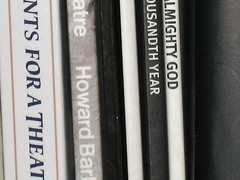I have been watching the gang at Decisive Flow for almost as long as I have been writing this blog — which is now well over two years. In start up world, that is about 10 years. And when you consider that Nat and Tim and the gang are based in New Zealand, far away from the spotlight and funding of Silicon Valley, then their successes are magnified several times over.
Why have Decisive Flow succeeded in a world of cut throat agencies, design shops and digitial sweatshops? I would like to say because they are nice folks … because they are clever. Because they do good work. Well it is more than these things … sure good work is important. Sure you need smart folk, good talent and it helps to be pleasant. But clearly, Decisive Flow deliver results. They identify gaps in the market and then seek to fill them. They create value for themselves, their clients and the consumers that they serve. They go beyond the mere creation of websites and applications, tapping into a global movement that aligns personal conviction with global need. It is the difference between talking and doing.
This project is a great example of how content, need, strategy and action come together in a Web 2.0 world. For every 100,000 visitors to THIS site between now and July 1st, one mason will be trained by LJ Urban to build houses in the land locked country of Burkina Faso (in Africa). That’s right … all you need to do is VISIT the site and encourage others to do so. This will make a REAL difference to the lives of a family. Learn more in this video …
And while the first step is to visit, there are many more options for action:
- Blog about this site. Let your readers know what is going on. Encourage them to visit.
- Write emails to your friends. Bookmark the site. Create traffic.
- Visit the blog and comment.
- Go the whole hog — buy a house and train a mason
Oh, and obviously, if you have a digital project that you need to activate. Give Tim and Nat a call. I am sure their simple and loveable approach will ring true for your business and your customers.





